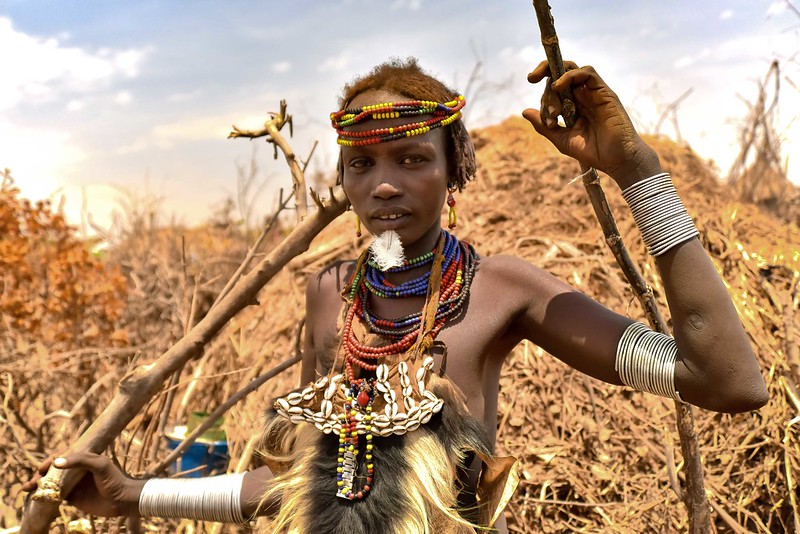Ethiopia is a country well known for her beautiful landscape and in Africa it ranks as one of the top destinations for the different out-door activities. In most cases these out-door activities are carried out during the dry season because the rains sometimes block off some roads making it hard to access some of the Ethiopia tour attractions where the activities can be carried out. There are different out-door activities that you can carry out when you visit the country and these include:
Trekking and Hiking
There are also foot paths that were put up so that tourists could enjoy their hiking and trekking and these lead to different tourist attractions that you can add to your ‘things to see’ list while in Ethiopia. The best time to visit and enjoy trekking and hiking is during the dry season especially after the rains because then the landscape will be filled with lush greenery and the trek routes will be free from mud and floods. There will be a tour guide who will take you through the hiking and trekking routes and on this trek you will learn more about Ethiopia and the places where you are trekking from. The different places where you can go for trekking include the following:

Top 5 places for Hiking in Ethiopia
The National parks like the Simiens National Park, the Gambella National Park, the Bale national park and many more others.
The Harar region where you will get to see the historical sites found in the area.
The Lalibela region where you will trek through the hewn churches.
The mountains that are located in the country.
Exploring the Great Rift valley on foot and many more other places
Running Through Ethiopia
Running is another outdoor activity that you can carry out when in Ethiopia. As other countries front soccer as their National sport, Ethiopia’s National sport is running and that is why the country has many athletes who have won medals in international competitions. Ethiopians are known to be good runners and there is an annual run that is organized every year in Addis Ababa and many people including top athletes in the country take part. Before the run you will find many athletes running every morning and evening from the Meskel square and during your visit, you can join them before participating in the annual run that takes place in November.
White Water Rafting
Rafting can be done on the Rivers that are found in Ethiopia. White water rafting in Ethiopia is mostly done on the Blue Nile due to the amount of water that it has. It can also be done on the Awash River and rafting can take as many days as you want as long as the weather is conducive. You should be well prepared with your equipment for all those who are interested in the water rafting game and it should be done after the rainy season because during the rainy season, the water in the Rivers is too much to allow rafting as the rapid are submerged. All white water rafting adventures are led by an experienced tour guide in case of any accidents during the excursion.
A Road Trip Through Ethiopia
Road trips have become popular with most tourists who visit Ethiopia because in most cases it is the only way you can visit and explore the corners of the country. The country has a very good landscape which will enable you drive your car from one corner of Ethiopia to the next and this is done using 4 by 4 wheel drive vehicles. A road trip in Ethiopia can easily be arranged as you drive from one tourist attraction and just connect to the next one and rest at the accommodations that are available in the destination places. Ethiopia has clearly mapped out routes that lead to the different tourist attractions and these will greatly help you during your road trip.
Top main road trip routes you can embark on your Tour in Ethiopia
- The Addis Ababa Route
The Addis Ababa route passes through the capital city of Ethiopia and is mostly used by those that are going to explore the city center. Along this route you will be able to see the various museums that are in Addis Ababa like the National Ethiopian museum, the red terror museum, a few National parks and also give you an opportunity to view the annual run which takes place in September You will also get to meet the different locals that live in the capital city. Basically the route is for those that have a limited time to visit the country as a whole.
- The Eastern Route
The Eastern route also known as the Bales Mountain route can also be used for your road trip in Ethiopia. It passes through the Bales Mountain hence the name and it also passes through the Holy city of Ethiopia known as Harar which ranks as fourth among the holy cities in the whole world.
- The Southern Route
The southern route is also known as the Rift Valley and cultural symbol route and this is because it passes through the Great Rift Valley which separates the country into two. As you drive through the Rift valley, you will be able to admire all the unique land formations that came about in form of Mountains, crater lakes and the valleys and you can join in the many activities that are carried out here which include birding, animal viewing, relaxing on the shores of the Lakes, trekking, meeting the locals and many more others.
- The Northern Route
The Northern route is also one of the many routes that you can use during your road trip in Ethiopia and while on this route, you will pass through the Simiens Mountains where you can rest and also enjoy some trekking, enjoy some local food, visit the Simiens Mountains National Park and visit the nearby areas.
- The Western Route
The western route leads you straight to the Gambella National Park but that does not mean that on your way you will be bored. You will have a good view of the beautiful landscape that Ethiopia has to offer like the lush greenery on the hills, forests and when you get to Gambella National Park, you will be able to enjoy the beautiful scenery provided by the birds, animals and trees.
The above routes are not the only ones you can use while on a road trip through Ethiopia but they are the major ones. The best time to go for a road trip is during the dry season because during this time the roads are passable and not flooded.
The Caving Excursion
Ethiopia has many caves that you can visit while in the country and most of these were formed during the formation of the Great Rift Valley. This is an out-door activity and it is mostly carried out during the dry season for obvious reasons. Some of the caves that you can visit include:
The Achare-Anyage caves and these are located on the slopes of Mountain Arba Gugu in the eastern part of the country. The cave has 7 kilometer underground routes and these can be explored by tourists for as long as you have a tour guide with you.
The Sof-Oma caves which are annually visited by Muslim pilgrims. They are easily accessed and you can join the many pilgrims on this journey to the caves.
The caves in the Aksum region which were constructed into churches can also be visited and explored with the help of a tour guide who will help you when it comes to translation and guiding you on which routes to use.
The Balloon Air Balloon Rides
This is where numerous balloons are filled with hot air and you get to view the landscape from the balloon as it rises into space. It is a fun filled activity which you get to enjoy with your loved ones but the best way to get on the balloon ride is by booking earlier on so that you do not find all the rides taken and it also depends on the type of weather. During the rainy season it is extremely hard for one to access the air balloon services which is the exact opposite when it comes to the dry season.
Rock Climbing In Ethiopia
Ethiopia is filled with a good landscape which allows the rock climbing activity to be carried out. Since part of the country was greatly affected by the Rift valley formation, you will find that there are many challenging rocks in the country where you can go and have fun like the Simiens Mountains, the hewn churches in Lalibela and the Bale Mountain. You will need rock climbing gears and a tur guide on all the excursions that you will carry out on the rocks.
Popular Destinations In Ethiopia
Ethiopia is a country that is located in the Northern part of Madagascar and it is a country that is known for her rich culture. Ethiopia is known to have nine UNESCO world heritage sites that you can get to visit and learn more about the history of the people in Ethiopia. Heritage sites can be visited by anyone and it doesn’t have to be only those who are interested in history. These heritage sites have a lot to offer to all tourists and some of the things that made them UNESCO heritage sites and that is why they are visited by the different people from all over the world. Ethiopia has one natural heritage site which is Simiens national Park whereas the remaining eight all fall under the Cultural sites category. These sites are found in the different parts of Ethiopia which means that you will have to travel form one corner of the country to the next.
The Omo Valley
The Omo valley is rich in Ethiopian culture and one of the reasons as to why it is a UNESCO heritage site is because of the presence of the Fossils site that is located in the valley. There are several fossils that were found in the Omo valley and these were used to study the evolution of human life by different researchers. And besides the fossils that have been safely kept in the museum for all to see, the unique culture in the Valley is an experience that everyone should go through since the different ethnic groups found in the valley have different traditional customs.
Explore The Tiya Stelae
The Tiya stelae is found on the Soddo region two hours from Addis Ababa and it is filled with large monuments that rise up to five meters and the Tiya is just a few minutes away from the capital city of Ethiopia Addis Ababa and it has various mass graves that are marked with different symbols and the beauty about them is that no one actually knows who constructed these monuments. They are so mysterious in that these standing stones have no history written about them which makes it fun to go for a visit because then you get to come up with your story about how they were formed.
Some people believe that the graves belonged to the fallen soldiers both women and men who were buried in a standing positon but no one knows who buried them and some people still believe that they represent some of the Ethiopian culture.
Travel To Gondar City
Gondar city is referred to as the Camelot of Ethiopia and it is located near the Lake Tana. It has a lot of things that made it to become a UNESCO heritage site and these are the Fasil Ghebbi which was constructed by the Emperor Fasil during the 17th century and is located in the Gondar city where many more heritage sites can be seen. It was also a home to most of the country’s Emperors lived. The Fasil Ghebbi has seven other different sites which include the monasteries, a palace, churches, a thermal area and a bath. A visit to the Gondar city will take you back in time to see the how medieval Ethiopia looked like and how the Emperors lived during those times and therefore you cannot just leave Ethiopia without visiting the Gondar city.
The Konso Cultural Landscape
The Konso landscape is located in semi-arid area which has the oldest form of house settlement in the country. The most interesting thing to see in Konso is the Daga- Hela which is used by the locals to carry out rituals, the old houses that were constructed using stones and their unique architect design and the wooden statues that many locals especially the Waka people put up in remembrance of their dead relatives.
Visit The Harar City
The Harar city is located at the border of Ethiopia and Somalia and it is believed to have been founded around the 13th Century. The Harar city was a merchant city way back and the reason as to why it was made a UNESCO heritage site was because of the way the houses were constructed using rocks. They were uniquely designed and this earned the place to become a heritage site. There are several other activities besides walking through the town that you can carry out in Harar and some of these include feeding the hyenas although this is done in the presence of a tour guide, exploring the museums especially the Arthur Rimbaud museum where most of his art paintings of the old Harar town are displayed and when you visit the museum you will realize that little has changed about the Harar city according to Arthur’s paintings.
The Simien National Park
The Simien National park is the only natural site in Ethiopia that has been made a UNESCO heritage and it is a home to the Simiens Mountain. It was one of the first sites in the horn of Africa to be made a UNESCO heritage in 1978 and it because heritage site due to the fact that it houses endangered species of animals that habitate in the Park like the Ethiopian wolf and the Walia Ibex. Note that the Ethiopian wolf can only be seen in Ethiopia and nowhere else on the African continent. There are several activities that can be carried out in this heritage site like the trekking, wild life watching, birding and camping but in the year 1996 the Simiens National Park was declared endangered due to the interference which is caused by the locals who keep on cutting down the trees in order to create land for settlement and farming. The government of Ethiopia however is trying their level best to try and stop the rampant deforestation so that they save the forest and all the endangered species that are in the forest.
The Ancient City Of Axum
The Axum city that is located in the Northern Part of Ethiopia is one of the UNESCO heritage sites that is found in the country. Aksum sometimes spelled as Axum is known to be a city where most Emperors of Ethiopia originated from and with the many historical sites that are located in the city, it is one of the reasons as to why it was made a heritage site. The various sites that can be seen in the Axum city include the Ark of the Covenant chapel located in Aksum is believed to be where the ark of the covenant of God was kept by the son of King Solomon and the queen Sheba. The chapel has one priest who keeps guard over it every day and tourists are supposed to watch it from a distance since it is out of bounds to the public. The other interesting thing to see in Axum is the King Gebre Meskel and Caleb tombs, King Caleb was the son of King Meskel and their tombs are joined together making them twin tombs. These were constructed with unique architecture with their own interlocks although the Caleb grave is not complete and some people believe that his body was buried elsewhere in a monastery. The King Meskel tomb has three sarcophagi that has been studied by different historians and one of them has the emblem of the old Axum kingdom.
The Awash Valley
The Awash valley located just about 300 kilometers away from the capital city of Ethiopia Addis Ababa is just like the Omo valley that is they both have fossils that were discovered some years back but the only difference is that the fossils are much older than those that were discovered in the Omo valley. They are believed to be the oldest fossils on the African continent. The fossils are believed to be dating back to over five million years ago and the bones that were discovered led to the reconstruction of Lucy, a skeletal formation of the human race and Lucy can be viewed in the National museum of Addis Ababa.
The Rock Hewn Churches Of Lalibela
The churches of Lalibela are located in the Amhara region and the unique rock churches that are found in the area are what made it to be among the UNESCO heritage sites in Ethiopia. The rock hewn churches of Lalibela also referred to as the New Jerusalem due to the beautiful and unique churches that are located in the area. There are thirteen churches that are located in Lalibela and these are separated into three sections that is the Northern churches, the southern churches and the St George church. All these have a lot of history especially when it comes to the Christian history that is in Lalibela and during some occasions, many pilgrims can be seen travelling to the Lalibela to pay homage. These churches were built using stones in the 13th century and it is one of the most holy places in the country.
Exploring western Ethiopia
The western route in Ethiopia takes you through many tourist attractions that are all unique from each other. As you pass through the Western side of the country, you will be greeted with vegetation that covers the larger part due to the presence of many forest and coffee plantations that can be seen on the various hills in the western side of the country. If you love exploring nature, then pack your bags and let’s head down to the Western route in Ethiopia as we discover what it all has to offer in terms of tourism.
Visiting the Jimma city
The Jimma city is the largest town in Western Ethiopia and it is one of the few places where most tourists stop as they head out to explore the rest of the Western side including the south western part. Jimma has a lot to offer to tourists like coffee trips and birding and this is due to the presence of the Kofe swamp and Lake Boye which act as habitats for many bird species in the country. While in Jimma, you will be able to also visit and explore the following:
The coffee farm in Bonga
Bonga is found in Jimma half way as you head to Tefari and it is believed that coffee beans were first discovered in this area. This is where the legend of the herdsman found the coffee beans after one of his animals ate them and started acting weirdly. And when you visit Jimma, you will be able to explore the coffee farms that cover a very large area in the Bonga and once there you might even get a chance to see how the coffee is picked from the gardens, dried before being processed. The good thing about visiting these farms is that you get to taste a freshly brewed cup of coffee before anyone else or before it is served in other parts of the country and outside Ethiopia.
Explore the Abba Jiffar’s palace
Jimma is a little known kingdom that was dissolved when their last king Abba Jiffar died. After the king died, the kingdom was taken up by the Ethiopian empire but the palace is still available in the Northern part of Jimma and you can easily see it when you are travelling through the city. And right next to the palace you will find the Jimma museum where you will learn more about the lost kingdom and their king.
As you are travelling through Jimma, you will need a tour guide who will take you through the city while explaining all that you will see and they also help with communication by translating whatever you do not understand especially if it is being said by the locals.
The south western part trip
As you use the western route to explore the Western part of the country, this same rout leads you to the south western part of Ethiopia and what better way to enjoy all that the country has to offer other than by exploring the south western part since you will be using the same route.A visit to the Omo valley Most people believe that the Omo valley is where the earliest man lived since it is where fossils that are believed to be over 10000 years were found. Before these were located, the fossils of Lucy were believed to be the oldest but when the bones were compared, it was discovered that these fossils were much older than Lucy. When you visit the Omo valley you never know you might discover a few fossils yourself.
The Omo National Park
The Omo National Park is located in the Omo valley and it is one of the few tourist attraction sites that you will see when you get to the Valley in the south Western part of the country. The park has a variety of wild life that ranges from animals to birds and these can easily be viewed when you trek through the Park. And as you visit the Omo Park you will also get to visit the Omo River that was made a UNESCO heritage site and carry out some activities like fishing, boat riding and visiting the numerous tribes that live around the Park and get to know more about cultural practices and way of life.
Visiting the Suri people
The Suri people live in a settlement that is known as the Kibish settlement and they are part of the Mursi and Me’en people. All these tribes have similar characters and they speak the same language known as the Surmic language. They have unique cultural practices that you will want to experience or see for example, the men engage in a stick fighting competition and the participants come from different villages. It is a vigorous fight but fun to watch and when you meet the women, you will find them adorned with lip plates that they were made to put on from the time they were young and they also elongate their earlobes as a way of enhancing their beauty. They also do body painting so as to increase on their beauty and attract the opposite sex and you can also engage in the body painting because it is not harmful to the skin.
As you trek through the Suri village it might take you about a day or a week to explore the village and getting to know more about the whole area.
Exploring the Tea and coffee farms
As you head out to the south western part of the country, you will find the Tepi coffee farms and the Wushwush tea plantations. The Bebeka coffee farms are also located in the same area and these are known to be one of the largest coffee farms in the country. You will be able to know more about how coffee and tea is grown, harvested and processed from the locals that work on the various farms.
And you do not only explore the farms but you also get a chance to purchase the coffee and tea freshly produced at a decent price.
Note that as you go on you visit to the south western art of the country, you will need a licensed tour guide for all these expeditions if not for direction, then for the purposes of communication because most locals neither speak nor understand English.
Visiting the Gambella region
The Gambella region is one of the few things that you will be able to see on your trip to the Western side of the country. It has a good scenery that will blow your mind away especially for those that love photography. The Gambella region is a bit hot and therefore as you visit the area make sure that you pack appropriately so that you enjoy your trip without too much hurdles. Some of the tourist attraction sites that are found in the Gambella region include the following:
The Gambella National Park
The Gambella National Park is one of the best places to visit for all those who want to relax and watch the wildlife that streams through it. It is located at the border of Sudan and Ethiopia and its location has greatly affected the number of wildlife in the area. The animals have either shifted or been killed due to the ongoing war in the neighboring country but this does not make it an unsafe place to visit especially for the tourists.
Some of the animals that have remained and can be seen in the park include elephants, the white eared Kob, the roan antelope, buffalos and many more others. There are also some bird species that can be seen especially in their natural habitats and not forgetting the trek through the park with a licensed tour guide who will show you all the ins and outs of the Gambella national park.
Visiting the locals
Visiting the locals is one of the best activities that you can carry out when you visit the Gambella region. There are two tribes that live in the Gambella and these are the Anuak and Nuer people. These have similar characteristics to the people found in the neighboring South Sudan. Their appearance is quite different from other Ethiopians as they are dark skinned and extremely tall as compared to the rest of the people in the country.
The Anuak people are farmers whereas the Nuer are pastoralists who keep on moving from one place to the next in search of pasture and water for their animals. When you visit Gambella, you will get to know more about the locals and all that they have to offer and not forgetting their unique culture.
The tour to the western part of Ethiopia will be made one trip so that you get to see all these places following the same itinerary from Jimma to Gambella. This will help you to save on some money while experiencing all the good things that the west has to offer you.
Frequently Asked Questions on Ethiopia (Ethiopia FAQs)
Do I need a visa to visit to Ethiopia?
All persons visiting Ethiopia are required to have a passport valid for at least six (6) months from the date of their duration in Ethiopia, as well as a tourists visa that can be purchased on arrival from any of the border points or at the airport. A tourist Visa costs between $50 and $70
Is travel insurance needed when visiting Ethiopia?
Yes, whenever traveling to a foreign country, you are advised purchase a good travel insurance and preferably one that offers medical cover as well as repatriation incase of emergencies.
Is a yellow fever vaccine needed to visit Ethiopia?
Yes, everyone visiting Ethiopia is reuired to present a yellow card certificate to the immigrations officer as proof of receiving the yellow fever vaccine before being granted access into the country.
What is the local currency in Ethiopia?
The official currency of the Federal Democratic Republic of Ethiopia is the Ethiopian brr (ETB) and this is issued officially by the National Bank of Ethiopia.
Are credit cards accepted in Ethiopia?
A number of large hotels accept Credit cards however these cards are not popularly used across the country. ATMs are only available in the large centers and not in the villages so you are advised to change your money and make all necessary cash withdraw before heading out to the countryside.
Is tap water safe for drinking in Ethiopia?
No, tap water in Ethiopia is considered not safe to human consumption. it is for that reason that you should only drink bottled drinking water and ensue that the bottle seal is intact at the time of purchase or being served.
Is tipping accepted in Ethiopia?
In Ethiopia, it is not mandatory to tip however incase you receive some exceptional service it is ok to offer one a tip as a form of appreciating their great service delivery.
Is there internet access in Ethiopia?
Yes there is good internet access in most of the large tons across the country ith a number of top hotels, restaurants and café’ offering the service, hoever, henn you travel to the more remote destinations, especially the national parks, the service may not be there.
Can I use my cell phone in Ethiopia?
When in the urban centre; maybe yes, however, you are highly advised to obtain a local sim-card with any of the local telephone networks in the country such as Etthio Telecom, orange group, Tana Communications, Ethio Net, Tecno Telecom and Smadl to keep in touch with your people back home.
What is the electric voltage in Ethiopia?
Ethiopia runs on a 220V voltage supply with 50HZ and uses the types C, E, F, and L plugs. Persons visiting the country are advised to bring their on adapters and where need be a converter to step-down the electric voltage.
Best time to visit Ethiopia
From October to March is considered the best time to visit this beautiful country when it’s dry and generally sunny. During this time the temperatures in the night drop dramatically and it’s for that reason that holidaymakers are encouraged to park enough warm clothing for the nights and early mornings. In general the climate of Ethiopia defers depending on the part of the country you are visiting. The wet season which begins around June to September is characterized by light rains that begin sometimes in mid March, and the wettest months however are June and July especially within the northern Highlands. In the South especially with in the Omo valley the country experiences two different rainy seasons so you should keep that in mind especially if you plan to visit that area.
Below we look at the best time for visiting the different parts of the country
Best time for hiking the Simien Mountains
Standing at a maximum height of 14,901 feet the Simien Mountains are a large mountain range and in fact the highest of the African continent. one of the most popular tour activities in Ethiopia are trekking adventures on this mountain where holidaymakers get an opportunity to enjoy the breathtaking scenery, explore water streams, view deep gorgeous and even see some of the endangered wildlife species among which are the walia ibex and the gelada baboons.
This mountain range can best be trekked during the dry season especially in September and November when it is generally dry and the vegetation is still green. Visiting in October will also give you an opportunity to view the beautiful wild flowers that will be flourishing at the time
Best time to visit the northern Highlands
The northern islands of Ethiopia are best known for their legendary old churches that were cut from rocks and these can best be visited from October to February when the country is experiencing the dry season. Nonetheless budget travelers who wish to visit this island can also do so in the rainy months in March and April when most of the accommodation are offering discounted rates and many tour operators have discounted Ethiopian Tour rates as well; although it is raining at the time of the year the rains never last the entire day so you will still have a chance to go and enjoy your tour. In June and July because the rains are extremely heavy you are advised not to take you tour at that time as the climatic conditions would not be favorable at all.
Best time to visit the Danakil Depression
according to experts one of the hottest places found on earth is the Danakil depression where temperatures can easily shoot to over 122°F. a tour to this area will give you an opportunity to see ancient salt caravans, numerous active volcanoes as well as have a personal experience of the unique culture of the Afar people so the best time to visit this area is during the cold months from November to March when the temperatures are a bit lower.
- Best time for a hot air balloon ride
one of the most unique and adventurous ways to explore Ethiopia and its beautiful landscape and scenery is by taking a hot air balloon ride this however can best be done during the dry season from October to February
- Best time to enjoy Ethiopian festivals
This is one of the culturally diversified countries and for that reason has several festivals all year round most of which are religious and these may last for a number of days. the most prominent festivals are those of the Orthodox Christians as highlighted on the country’s calendar among which are the Ethiopian Christmas also called Ganna that is celebrated every 7th of January unlike the traditional 25th of December elsewhere in the world, and the Ethiopian New years that comes on 11th September and it is also locally known as Enkutatash.
Popular Ethiopia Tours
4 Day Simien Mountain Tour
Day1: Gondar
Day 2 & 4: Simien Mountain
Accommodation: Camping
Cost per person: $550
5 Day Northern Ethiopia Tour
Day1: Addis Ababa
Day 2 & 3: Lalibela Town
Day 4 & 5: Addis Ababa City
Accommodation: Mid-range
Cost per person: $1,790 to $1,900
6 Day Danakil Depression Tour
Day 1: Addis Ababa
Day 2: Hamada Ela village
Day 3: Dankil Depression
Day 4: Erta Ale
Day 5: Mekele city
Day 6: Addis Ababa
Accommodation Type: Budget
Cost: $2,500
7 Day Addis & Southern Ethiopia Tour
Day1: Addis Ababa
Day 2: Arba Minch City
Day 3: Jinka Town
Day 4: Turmi Town
Day 5: Oorate Ton
Day 6 & 7: Addis Ababa City
Accommodation: Mid-range
Cost per person: $2,600 to $3,580










